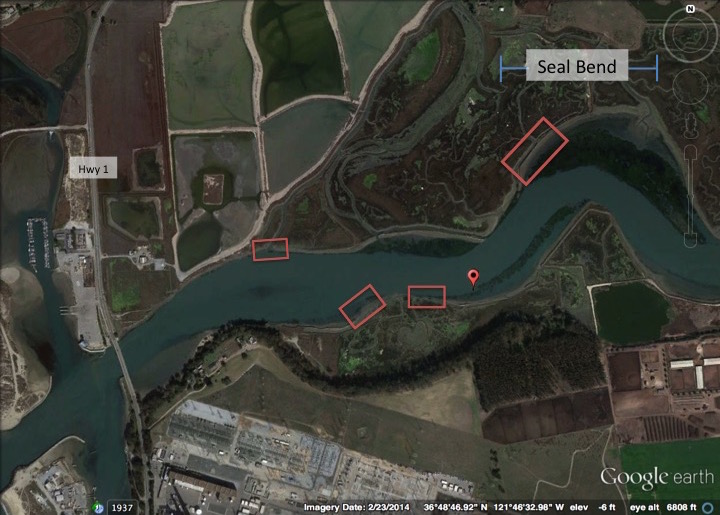I recently wrapped up my first field season in California. It definitely didn’t go as planned; but then again, fieldwork never really does go the way you think it will.
The original plan was to make recordings of individual male harbor seal calls, take pictures of the males that were surfacing near the underwater vocalizations, and then match these individuals to pictures of males on land. The pictures on land (described in a previous blog post) allow me to estimate the size and weight of an individual seal. Basically I was going to create a catalog of males in Elkhorn Slough that contained information on their vocal behavior, any distinguishing physical characteristics, and various body measurements. There were lots research questions to answer with this catalog, but step number one was obtaining the data to populate said catalog.

After a rough start to the season – various delays, both weather and animal related – I managed to get out in my kayak and make recordings. I didn’t know where exactly the males would be, so I decided to stop at about four or five different locations along the slough to listen. And sure enough, I found one! He was calling near the haulout on the south side, close to Seal Bend. Woooooo data!

I did this for a few days. I paddled around and around and made recordings in lots of different locations, but I could only ever find that one caller. The same male vocalized in the same spot for all of my recording days. Consistency was nice, but it wasn’t really what I needed to answer my research questions or construct that catalog. I had planned for multiple recordings of multiple individuals over a two-month period, but ended the season with a one or two good recordings of one seal that I made in the last couple days of my field season.
There are a few explanations as to why I didn’t get what I was expecting. First of all, I might have started recording a little late in the season. By the time I got out there, it was the middle to end of May, which is towards the end of the breeding season in that area. It could be that the other males had already stopped vocalizing. Second, maybe there was only one male calling this year. In the past, there have been three, four, or five males vocalizing in Elkhorn Slough, but maybe this year was different. No one has gone out to listen to them in a few years, so it’s possible that things have shifted and there’s only one man seal patrolling in the slough.

But everything is going to be okay!! I’ve got multiple projects going on at the moment and with the combination of this year and next year, I will easily have enough data to write up a dissertation. More on these other projects in a future blog…still focusing on harbor seals, just harbor seals that live a little further north…